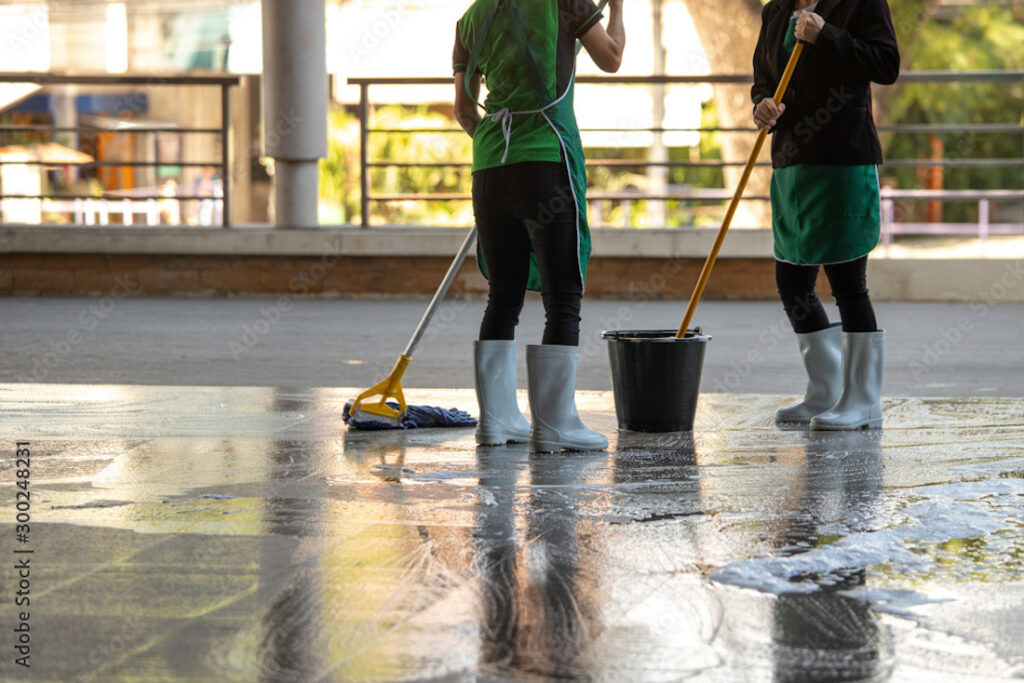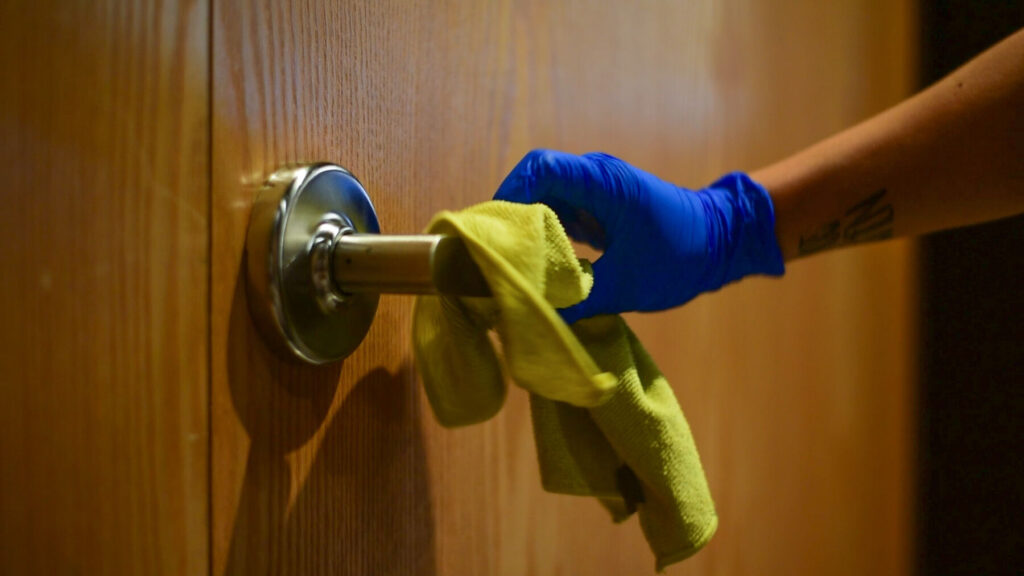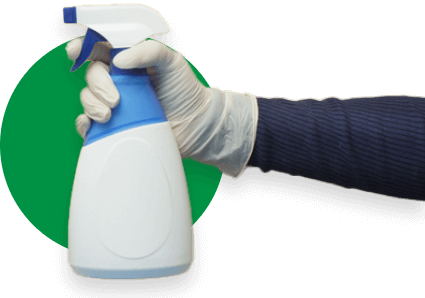More than 60% of parents in the U.S. reported being worried about their children contracting unwanted bacteria and viruses in school. This has become a particular point of contention since the COVID-19 pandemic in 2020. When school districts were preparing to reopen, it became crucial for all involved to know how to clean and disinfect schools. Whether or not a school hires a janitorial service to disinfect regularly, everyone should have a clear understanding of how to conduct a routine cleaning.
This article will give you a rundown on the difference between cleaning, sanitizing, and disinfecting, which products to use, how to clean properly, and more.
The Difference Between Cleaning, Sanitizing, and Disinfecting
Most people don’t understand the difference between cleaning, sanitizing, and disinfecting. In fact, you may have thought all three were interchangeable. While they all serve a common goal of keeping people safe from unwanted viruses and/or bacteria, there are clear and important differences. There are various types of sanitizing, cleaning, and disinfecting products that may be used depending on the situation. Get an even more in-depth understanding through this article.
The purpose of routine cleaning is to remove dirt, dust, impurities, and germs from various surfaces, high-touch areas, and objects. This process may not kill germs, but it reduces the risk of spreading bacteria and viruses. It is recommended to combine detergent or soap with water for the best results.
The main reason to use disinfectants is to eliminate germs completely. You can disinfect porous items, nonporous items, high-touch areas, bathroom surfaces, and much more using an EPA-approved cleaning solution.
An EPA-approved cleaning solution meets strict environmental and health criteria as well as pesticide registration requirements. This is to ensure the school is thoroughly disinfected without putting students or teachers at risk.
The sanitizing process lowers the risk of spreading infections as well as eliminates most germs. Sanitizing may be done by using cleaning and disinfecting products as well. While quite similar to cleaning and disinfecting, it is considered more of a combination of the two.

Cleaning and Disinfecting Products For Your School
While disinfectants may eliminate more germs than just cleaning, they may not be necessary in all situations. Disinfectants that are EPA approved are considered safe but can leave a harsh smell and can require a more intensive process.
The CDC and EPA believe that most surfaces and objects only require a routine cleaning in order to keep schools safe. Soap and water do the trick in most circumstances, including removing remnants of COVID-19.
Disinfectants become more important in high-touch areas such as toilets, drinking fountains, playground equipment, sink handles, and door handles. Be sure to disinfect porous items such as sponges after cleaning surfaces as well. This will ensure that possible germs are eliminated completely after a routine cleaning.
The EPA (Environmental Protection Agency) has verified a list of the safest disinfectants that have shown positive results against COVID-19. The recommended products include:
- Lactic acid
- Isopropyl alcohol
- Sodium bisulfate
- Hypochlorous acid
- Hydrogen peroxide
- Peroxyacetic acid
- Citric acid
- Ethyl alcohol
6 Tips for Safe Disinfectant Use
Unfortunately, not all disinfectants are safe. While there are many products that can eliminate germs, some may be potentially harmful to humans, animals, and the environment. Here are six tips for safe disinfectant use:
- Always read the instructions. A surefire way to misuse disinfectant products is to use too much or use it improperly.
- Follow the contact time. Even safe products can be harmful if left on the skin for too long.
- Check to make sure the product was approved by the EPA. Again, there are many products that kill germs fast. Without the EPA’s approval, they may be potentially dangerous to use.
- Wear gloves when using disinfectants and wash your hands afterward. This ensures the safety of your skin.
- Keep the products away from children. Children are known to ingest things they shouldn’t. Make sure to keep disinfectants as far away as possible.
- Be sure to clean the surface before using a disinfectant. This will help the product work the way it is intended to.
The Process for Cleaning and Disinfecting Schools
The purpose of cleaning and disinfecting schools is to make students and teachers safe. Therefore, the process should be strategic and taken seriously.
Whether you are cleaning yourself or using a janitorial or cleaning staff, having a clear vision can help to ensure a healthy learning environment.
Develop a Plan
Daily, weekly, and monthly checklists are a great way to keep your cleaning staff on track. Having a clear understanding of which areas need cleaning and/or disinfection, what products are necessary, and what equipment is necessary is very important.
Clean the Areas that Require Routine Cleaning
First, establish which areas only require routine cleaning. These areas usually include:
- Railings, playground equipment, tables, benches, and other similar outdoor areas. This is a sufficient way to remove germs without exposing children to chemicals.
- Areas that are not touched often, such as walls, carpeting, air vents, windows, walls, floors, and light fixtures.
If you would like to explore in more detail how deep cleanings are done at school, you can explore this article.

Clean Then Disinfect Surfaces and Objects that are Touched Often
Areas that are most likely to carry a large number of germs are ones that are touched often. These areas generally require cleaning as well as disinfecting. Be sure to wear gloves, especially if there are signs of body fluids or blood.
These areas usually include:
- Countertops, doorknobs, desks, hands-on learning items, phones, toys, computer keyboards, and faucet handles.
Clean and Disinfect Porous Shared Items
In a school setting, there are many porous items that are shared, such as towels, blankets, jerseys, or oven mitts. These items are more difficult to disinfect compared to hard surfaces. Be sure to launder them frequently, as they can be a common way to spread germs.
Tips for Cleaning and Disinfecting Schools
Safety should always be your main priority when cleaning or disinfecting your school. Here are some tips for cleaning and disinfecting:
- Make sure the space is ventilated by opening windows
- Make sure you follow the instructions, including diluting the product when required
- Be sure to know if students or educators have certain allergies or asthma that could be triggered due to specific cleaning or disinfectant products
- Give a product a chance to air dry
- Leave the disinfectant on a surface for as long as the instructions say
Properly Clean and Disinfect Your School with a Cleaning Professional
Unfortunately, we can’t always control when our children get sick. However, ensuring our schools are properly cleaned and disinfected can make a major impact. Having an experienced, highly qualified cleaning staff can make all the difference.
Dallas Janitorial Services is here to help. While dangerous pathogens like viruses, bacteria, and fungi are often microscopic, our Dallas, Texas-based cleaning staff knows just what to look for. We pride ourselves on our effective, efficient work, and we’re available 24/7. That means we can work on your schedule when you need us.
Dallas Janitorial Services is a premier commercial cleaning company in DFW. Insured, certified, and bonded, we offer top-notch sanitizing, disinfecting, and cleaning services at affordable rates. Get a quote today.
Frequently Asked Questions on Cleaning and Disinfecting Schools
How often should I clean my school?
We recommend a routine cleaning every day, both indoors and outdoors.
How often should I disinfect my school?
Twice a day is recommended. This is particularly important in high-traffic bathrooms.
What is the correct way to dispose of waste?
Each school has a standard procedure for disposing of waste. This may include the use of no-touch waste baskets, wearing gloves, and disposing of cleaning items into the trash immediately after using them. It is encouraged not to touch used tissues or paper towels and to wash your hands after disposing of waste.







